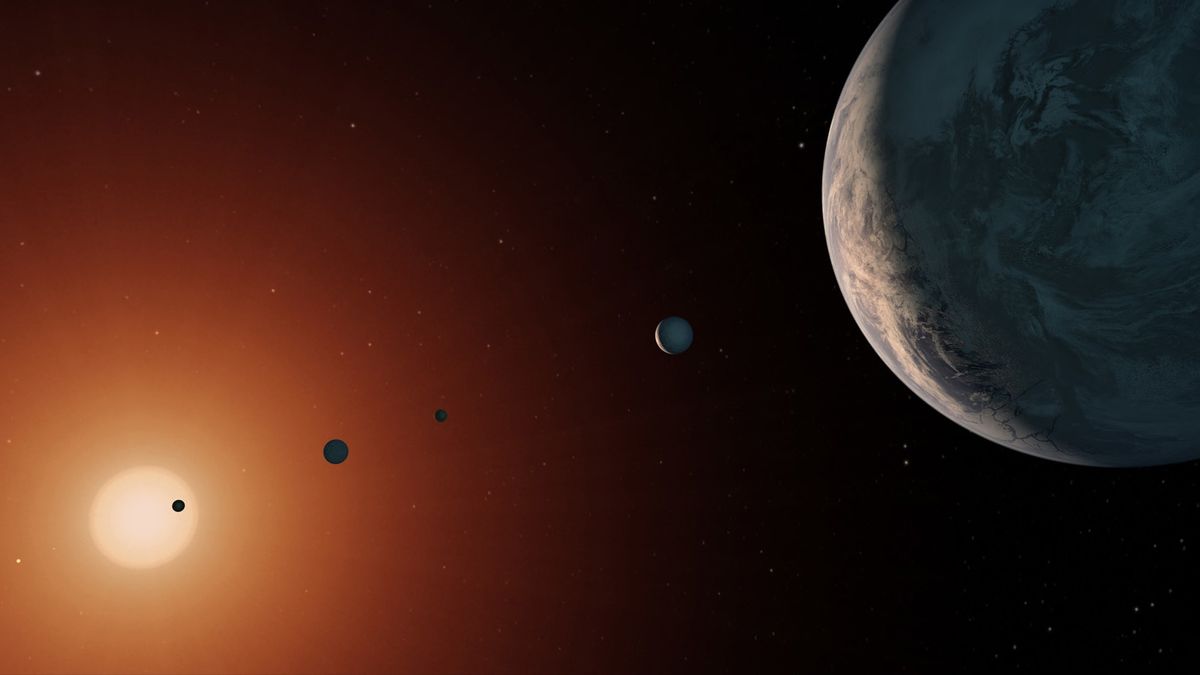
Nov 26, 2021
2 mins, 1 sec
A big space rock would have thrown planets of the Trappist-1 system out of sync.
Now, a new study suggests that the way the TRAPPIST-1 planets orbit might reveal clues about their evolution and how frequently space rocks smashed into them in their formative years. .
Around the star, seven exoplanets about the size of Earth, referred to by simple letters from TRAPPIST-1 b to h based on their distance from the star, orbit in a way that astronomers call 'resonant.' Resonance means that although each planet takes a different amount of time to complete one orbit, pairs regularly meet again at the same starting point. .For example, for every 8 orbits completed by planet TRAPPIST-1 b, which is closest to the star, planet c makes 5 laps, planet d 4 and planet e 2 orbits.And in the new research, scientists argue that this strangely regular orbital dance would not be possible if those planets were subjected to too much hammering by space rocks after their birth in the protoplanetary disk that surrounded the newly formed TRAPPIST-1 star some 7 billion years ago. .
The model suggests that planets in the TRAPPIST-1 system must have formed very early and very fast, in about one-tenth of the time that it took our Earth to form, the scientists said in the statement. ?By the time the protoplanetary disk around TRAPPIST-1 disappeared, these planets were already orbiting close to their parent star?Scientists hope that understanding the intensity of the bombardment by space rocks in the early stages of a planet's life may help them understand the planet's chemical composition.Currently, scientists know very little about the chemical composition of the TRAPPIST-1 worlds."We have some constraints today on the composition of these planets, like how much water they can have," Andre Izidoro, an astrophysicist at Rice University in Houston and a co-author of the paper, said in the statement.But these planets may have already formed from matter containing more hydrogen and naturally have more water than Earth, even without all those incoming comets and space rocks. ."For instance, if one of these planets has a lot of water, let's say 20% mass fraction, the water must have been incorporated into the planets early, during the gaseous phase," Izidoro said."For the TRAPPIST-1 system, we have these Earth-mass planets that formed early," Rajdeep Dasgupta, a planetary scientist at Rice University and another co-author of the paper, said the statement